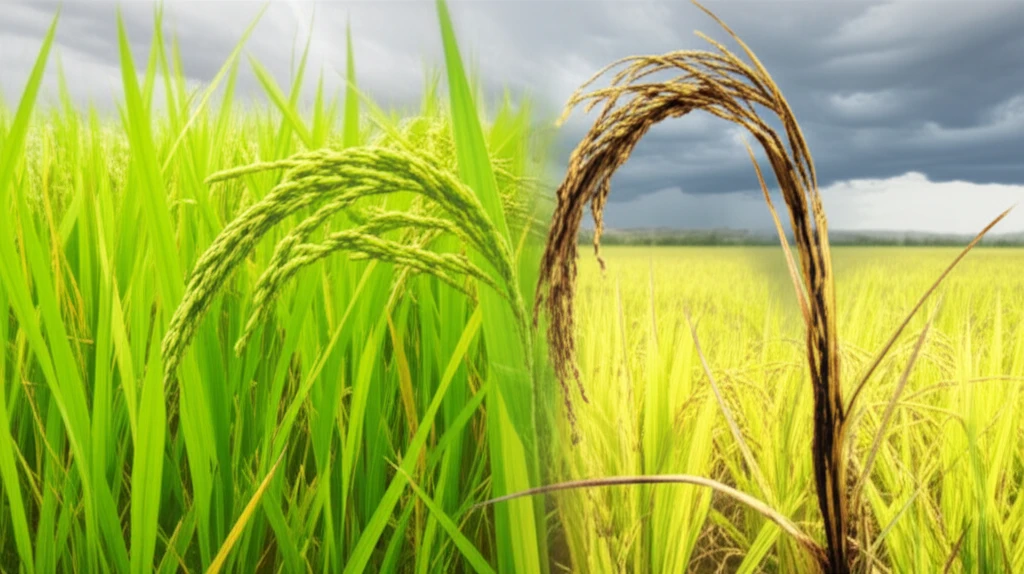
Sheath Rot in Rice: Decoding the Threat and Safeguarding Your Harvest
"Unveiling the Secrets of a Devastating Rice Disease and How Farmers Can Protect Their Yields"
Rice, a staple food for billions globally, faces numerous threats that can jeopardize its production. Among these, sheath rot, caused by the fungus Sarocladium oryzae, stands out as a significant concern, particularly in regions with intensive rice farming. This disease can lead to substantial yield losses and has a global impact on food security.
Sheath rot primarily affects the flag leaf sheath, which protects the developing panicle (the part of the rice plant that holds the grains). Infection at this critical stage can result in unfilled grains, reduced grain weight, and overall lower yields. Understanding the disease's dynamics and how it interacts with different environments is crucial for effective management.
This article delves into the agro-ecological variations of sheath rot, exploring its incidence, severity, and the genetic structure of the pathogen. By examining the factors that influence the disease's prevalence, we aim to provide valuable information for farmers, researchers, and anyone interested in ensuring the health and productivity of rice crops.
Understanding Sheath Rot: Causes, Symptoms, and Impacts

Sheath rot manifests as dark, irregular lesions on the flag leaf sheath. As the disease progresses, these lesions enlarge, often leading to rotting and eventual damage to the panicle. In severe cases, the panicle may fail to emerge fully, leading to a condition known as 'whiteheads,' where the grains are unfilled and sterile.
- Lesion Development: Initially, water-soaked lesions appear on the flag leaf sheath. These lesions darken and expand.
- Panicle Damage: The disease affects the emerging panicle, leading to unfilled grains.
- Yield Reduction: Significant yield losses can occur due to reduced grain filling and weight.
- Seed Transmission: The pathogen can be transmitted through infected seeds, spreading the disease.
- Environmental Factors: Warm, humid conditions, dense planting, and excessive nitrogen promote disease development.
Protecting Your Rice Crop: Management Strategies and Future Directions
Effective sheath rot management involves an integrated approach, combining cultural practices, varietal selection, and, where appropriate, the judicious use of fungicides. Promoting good air circulation, avoiding excessive nitrogen fertilization, and using disease-free seeds are essential cultural practices. Developing and deploying rice varieties with resistance to sheath rot is a sustainable and long-term solution, and this relies on continued research into pathogen variability and disease resistance mechanisms.
